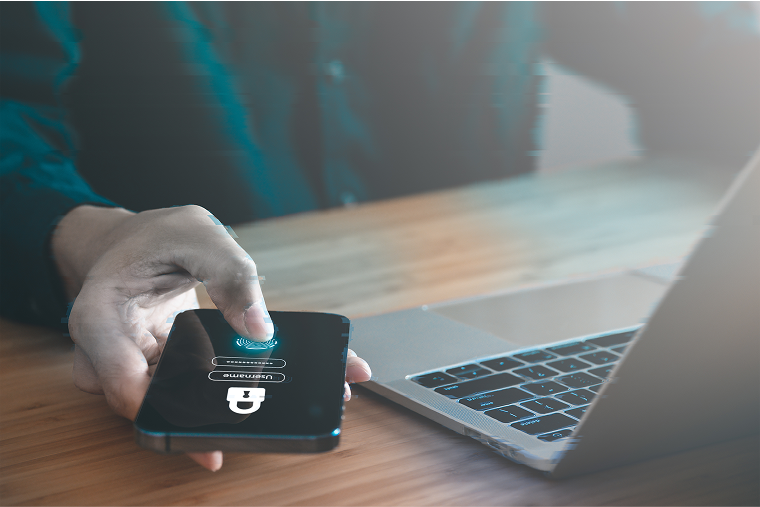Picture this: You’re trying to access your company’s Google Drive, but before you can get logged in, you must enter your username, password, and a code from your two-factor authentication app. While the extra step can be tedious, it’s called authentication.
Authentication is a critical process that safeguards sensitive data, protects digital identities, and keeps unauthorized users at bay. For businesses, it’s an essential layer of cyber defense protecting operations from threat actors.
But what exactly is authentication? How does it work, and what types of authentication are available? This blog dives deep into the concept, its importance for businesses, and the various methods used to verify identity in our hyper-connected world.
What is authentication?
Authentication is how organizations ensure that only authorized people, apps, and services can access their systems and data. It’s a key part of cybersecurity, since attackers often try to break in by stealing usernames and passwords. A strong authentication process helps block that, and it typically involves two or three main steps.
It’s different from authorization, which dictates what resources a user can access once they're authenticated. Authentication is the gatekeeper. Authorization decides how far you’re allowed to go beyond the gate.
Why is authentication important for your business?
In today's fast-paced business environment, cyber threats are evolving at a rate that outpaces most systems, making robust authentication practices essential. Protecting sensitive data is crucial, as businesses handle information ranging from financial records to personal customer data on a daily basis. Cybercriminals frequently target vulnerable authentication systems to access this information, and without strong protection, data becomes an easy target for breaches.
Additionally, human error remains a significant risk, with employees sometimes falling victim to phishing scams despite security awareness training. Authentication serves as a backup defense, ensuring only legitimate users can access systems. Implementing robust authentication measures conveys to clients that their information is secure.
Trust is vital, particularly for businesses in sectors like e-commerce or financial services, where customer confidence in data security is paramount.
Behind the curtain — how authentication works
At its core, authentication is about answering the question, “Are you who you claim to be?” The process generally involves three key components:
Something you know: This refers to information like a password or PIN. It’s a shared secret between you and the system. For example, typing in your unique password to access your email.
Something you have: This involves physical items like a smartphone, security token, or a smart card. Two-factor authentication (2FA) often involves sending a one-time code to your phone, verifying you possess it.
Something you are: This is where biometrics come into play. Systems can authenticate users through unique physical characteristics like fingerprints, retina scans, or facial recognition.
Many modern systems use multifactor authentication (MFA), which combines at least two of these factors. By requiring multiple forms of verification, MFA significantly raises the barrier for potential attackers.
Different authentication methods
Authentication isn’t a one-size-fits-all approach. Businesses can choose from several methods depending on their security needs. Here's a breakdown of the most common authentication types:
1. Password-Based Authentication
This is the most traditional method, requiring users to input a password or passphrase. While easy to implement, passwords are often weak links in security if they’re too simple or improperly stored. We encourage users to utilize a password manager to help create and store complex, unique passwords for every account.
2. Two-Factor Authentication (2FA)
Two-factor authentication is a verification method that requires users to provide at least two forms of identification to access something. Rather than just asking for a username and password, 2FA requires an additional verification factor, which can decrease the likelihood of a successful cyberattack.
3. Biometric Authentication
Biometric systems verify identity using unique physical traits like fingerprints, facial scans, or voice recognition. They’re popular for their ease of use and minimal reliance on memorized credentials.
4. Token-Based Authentication
Tokens act like virtual keys, granting access to users who hold them. Examples include hardware tokens or soft tokens embedded in authentication apps like Google Authenticator.
5. Single Sign-On (SSO)
SSO allows users to access multiple systems with a single set of credentials, streamlining authentication without sacrificing security. For example, logging into your Google account once might give you access to Gmail, Google Docs, and YouTube.
6. Adaptive Authentication
This intelligent method adjusts based on context and risk. For instance, if someone logs in from an unfamiliar location, they may need to answer additional security questions.
Cyber risks evolve, so should your authentication methods
Cyber threats are growing more sophisticated every year. Relying solely on basic authentication, such as passwords, can leave your business exposed. Here’s how businesses should evolve their practices:
Educate Employees: Employees are often the weakest link in security. Regularly train your staff with managed security awareness training on secure authentication and best practices with a password policy.
Implement Multi-Factor Authentication (MFA): MFA is one of the simplest yet most effective ways to bolster your authentication process. Tools like Microsoft’s Authenticator or Duo Security can make the transition seamless.
Leverage AI for Adaptive Authentication: Modern authentication solutions powered by AI learn from user behavior. For instance, if an employee logs in at an unusual time, the system may flag the activity and ask for additional verification.
Regularly Review Access Controls: Businesses should routinely audit user access privileges to ensure that only authorized personnel have access to sensitive systems.
Building a secure business through authentication
Authentication might seem like a small piece of the cybersecurity puzzle, but its significance can't be overstated. Whether you’re safeguarding sensitive financial data or simply logging into your business email, authentication is your first line of defense against the rising tide of cyber threats.
Is your current authentication method enough to protect your organization? If not, consider upgrading to modern solutions like MFA or adaptive authentication. Taking proactive steps today can save you from devastating security breaches tomorrow.


Protect What Matters







